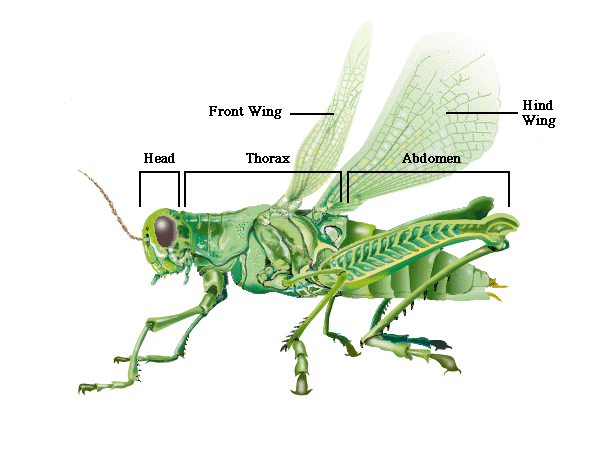Body
Structure
You
can identify insects by counting their body sections and legs. Insects
are athropods with three body sections, six legs, one pair of antennae,
and usually one or two pairs of wings. Not all insects have wings. The
three body sections of an insect are the head, thorax, and abdomen.
Head: Insects
are able to sense things with their eyes and antennae, which are
located on the head. Insects usually have two large compound eyes.
These eyes contain many lenses, which are structures that focus light
to form images. Most insects have small simple eyes that allows them to
know the difference between light and darkness.
Thorax: The
thorax is the midsection of an insect, where the wings and legs are
attached. It is under the head. Most insects can fly when they are
adults. Insects are the only invertabrates that can fly. With their
wings, Insects can
travel long distances to find mates, food, and new places to live.
Being able to fly allows them to escape from predators.
Abdomen: Inside
the abdomen are many of the insects interal organs. Small holes on the
outside of the abdomen lead to a system of tubes inside the insect.
These tubes allow air, which allow oxygen to enter the body. The oxygen
in the air travels directly to the insect's cells.

From:
http://biology.unm.edu/ccouncil/Biology_203/Summaries/Protostomes.htm
